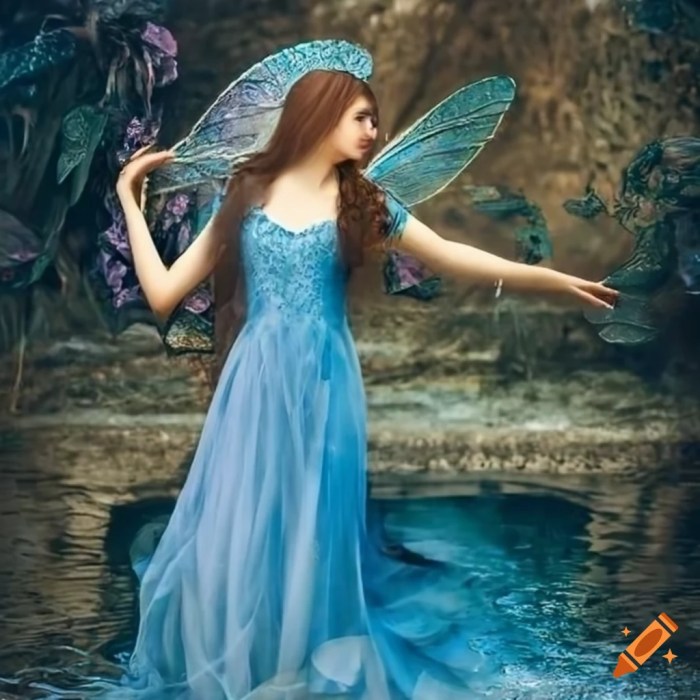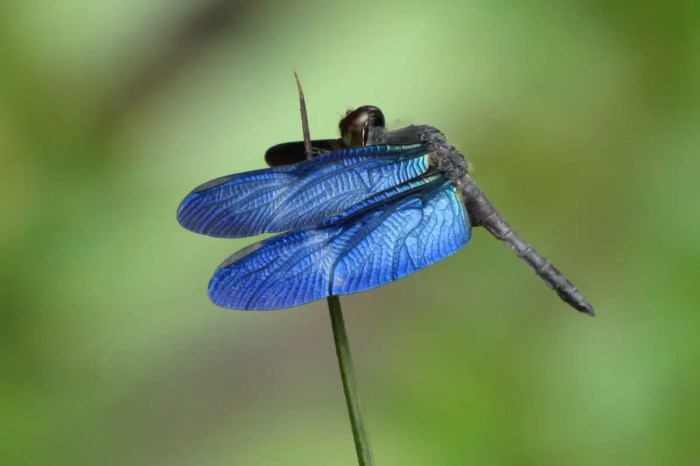Ethereal wings of a dragonfly, a breathtaking masterpiece of nature, beckon us into a realm of wonder and fascination. Their delicate transparency, vibrant iridescence, and intricate patterns invite us to delve into the secrets of flight and the beauty of the natural world.
Dragonfly wings, a testament to evolutionary brilliance, enable these aerial acrobats to soar through the skies with unmatched precision and grace. Their unique structure and adaptations have captivated scientists and artists alike, inspiring both scientific inquiry and artistic expression.
Definition and Description of Ethereal Wings

Dragonfly wings are marvels of nature, renowned for their delicate beauty and exceptional flight capabilities. These translucent masterpieces exhibit an array of captivating characteristics that contribute to their ethereal allure.
Their wings are composed of an ultra-thin membrane supported by a intricate network of veins. This delicate framework provides both strength and flexibility, allowing dragonflies to perform intricate aerial maneuvers with remarkable agility.
Transparency and Iridescent Colors
Dragonfly wings are exceptionally transparent, allowing light to pass through with minimal distortion. This transparency is attributed to the absence of pigments in the wing membrane. However, the wings often display a dazzling array of iridescent colors due to the way light interacts with the microscopic structures on their surface.
Intricate Patterns and Veins
The wings of dragonflies are adorned with an intricate pattern of veins that serve both structural and functional purposes. The veins provide rigidity and support to the wing membrane, while also facilitating blood flow and nutrient transport throughout the wing.
Function and Adaptation of Dragonfly Wings

Dragonfly wings play a pivotal role in their exceptional flight capabilities. Their unique shape and structure enable them to maneuver with precision and hover effortlessly.
Shape and Structure
Dragonfly wings are characterized by their elongated, narrow shape and transparent membrane. The leading edge of the wing is thickened and reinforced, providing rigidity and strength during flight. The trailing edge is thin and flexible, allowing for delicate adjustments in wing shape and movement.
Flight Maneuvers
The shape and structure of dragonfly wings contribute to their remarkable flight maneuvers. The thickened leading edge acts as a pivot point, allowing the wing to rotate and change its angle of attack. This enables dragonflies to make sharp turns, accelerate rapidly, and even hover in mid-air.
Hovering Ability
Dragonflies are among the few insects capable of true hovering flight. This ability is made possible by the unique wing structure. The flexible trailing edge allows the wing to deform and create a pocket of air beneath it. By rapidly flapping their wings, dragonflies can generate lift and maintain a stable position in mid-air.
Evolutionary Adaptations
The advanced wings of dragonflies are the result of millions of years of evolutionary adaptations. Over time, natural selection has favored individuals with wings that provide greater maneuverability and flight control. This has allowed dragonflies to become skilled aerial predators, capable of capturing prey with unmatched precision.
Cultural and Artistic Significance of Dragonfly Wings: Ethereal Wings Of A Dragonfly

Dragonfly wings have captivated the imaginations of artists and writers around the world for centuries, inspiring a rich tapestry of cultural and artistic symbolism. These delicate and iridescent wings have been depicted in literature, art, and folklore, representing a wide range of meanings and associations.
Just like the ethereal wings of a dragonfly, the need for pencils can arise unexpectedly. For instance, a customer may require 60 pencils for a school project or an office supply order. However, the delicate beauty of the dragonfly’s wings serves as a reminder that even the most mundane items can possess an element of grace and wonder.
Depictions in Literature
In Japanese literature, dragonfly wings are often associated with beauty, fragility, and the fleeting nature of life. The haiku poet Matsuo Bashō famously wrote, “The dragonfly’s wings / Are like the petals of a flower / That has just bloomed.”
In Western literature, dragonfly wings have been used to symbolize hope, transformation, and the power of dreams. In William Blake’s poem “The Tyger,” the dragonfly is described as having “wings of fire” that “burn the air.”
Depictions in Art
Dragonfly wings have also been a popular subject in art, particularly in Asian cultures. In Chinese and Japanese painting, dragonflies are often depicted with large, colorful wings that represent beauty, elegance, and good fortune. In some cultures, dragonfly wings are believed to have magical properties and are used in traditional ceremonies and rituals.
Reasons for Artistic Appeal
The cultural and artistic significance of dragonfly wings stems from several factors. Their delicate and iridescent appearance makes them visually striking, while their association with nature and the natural world appeals to our sense of wonder and beauty. Additionally, the symbolism of dragonfly wings as representing hope, transformation, and the fleeting nature of life resonates with our own experiences and aspirations.
Comparative Analysis of Dragonfly Wings

Dragonfly wings exhibit remarkable features that distinguish them from the wings of other flying insects. Their wings possess unique structural, functional, and aesthetic characteristics that set them apart.
Wing Structure
- Dragonfly wings are composed of a thin, transparent membrane supported by a network of veins.
- The veins are arranged in a complex pattern that provides strength and flexibility to the wings.
- The leading edge of the wing is thickened, providing stability and preventing flutter.
Wing Function
- Dragonfly wings are highly efficient for flight. They generate lift and thrust through rapid flapping motions.
- The wings’ shape and flexibility allow for precise control and maneuverability, enabling dragonflies to perform aerial acrobatics.
- The wings also play a role in thermoregulation, helping dragonflies maintain optimal body temperature.
Wing Appearance
- Dragonfly wings are often transparent or translucent, allowing light to pass through.
- Some species exhibit iridescent colors, produced by the diffraction of light through the wing’s microscopic structures.
- The wingspan of dragonflies varies greatly, with some species having wingspans of over 10 centimeters.
Unique Characteristics
- Dragonfly wings are the only insect wings that can flap independently of each other.
- The wings can be folded together over the body, providing protection when at rest.
- The wings are highly sensitive to touch, allowing dragonflies to detect and respond to changes in their surroundings.
Conservation and Preservation of Dragonflies

Dragonflies are important members of the ecosystem, playing a crucial role as bioindicators. Their presence or absence can provide valuable insights into the health of the environment. However, dragonfly populations are facing various threats, including habitat loss, pollution, and climate change.
Threats to Dragonfly Populations
- Habitat Loss:Destruction of wetlands, rivers, and other aquatic habitats due to urbanization, agriculture, and other human activities reduces the breeding and feeding grounds for dragonflies.
- Pollution:Pesticides, herbicides, and other chemicals used in agriculture and industry can contaminate water bodies and harm dragonflies and their prey.
- Climate Change:Rising temperatures and changes in precipitation patterns can alter dragonfly habitats, disrupt their life cycles, and reduce their overall abundance.
Conservation and Protection Measures, Ethereal wings of a dragonfly
To conserve and protect dragonfly populations, several measures can be implemented:
- Habitat Protection:Preserving and restoring wetlands, rivers, and other aquatic habitats is crucial for providing suitable breeding and feeding grounds for dragonflies.
- Pollution Reduction:Implementing best management practices in agriculture and industry can minimize the release of harmful chemicals into water bodies.
- Climate Change Mitigation:Reducing greenhouse gas emissions and promoting sustainable practices can help mitigate the effects of climate change on dragonfly habitats.
- Public Awareness:Raising awareness about the importance of dragonflies and their role in the ecosystem can foster public support for conservation efforts.
FAQ Explained
What makes dragonfly wings so unique?
Dragonfly wings are renowned for their transparency, iridescence, and intricate patterns, which result from their unique cellular structure and the refraction of light.
How do dragonfly wings enable them to fly so skillfully?
Dragonfly wings are marvels of engineering, providing exceptional lift, maneuverability, and stability during flight. Their shape, flexibility, and vein structure contribute to their remarkable flight capabilities.
What cultural significance do dragonfly wings hold?
In many cultures, dragonfly wings have been associated with transformation, hope, and good luck. They have inspired countless works of art, literature, and folklore, capturing the imagination of artists and writers for centuries.
